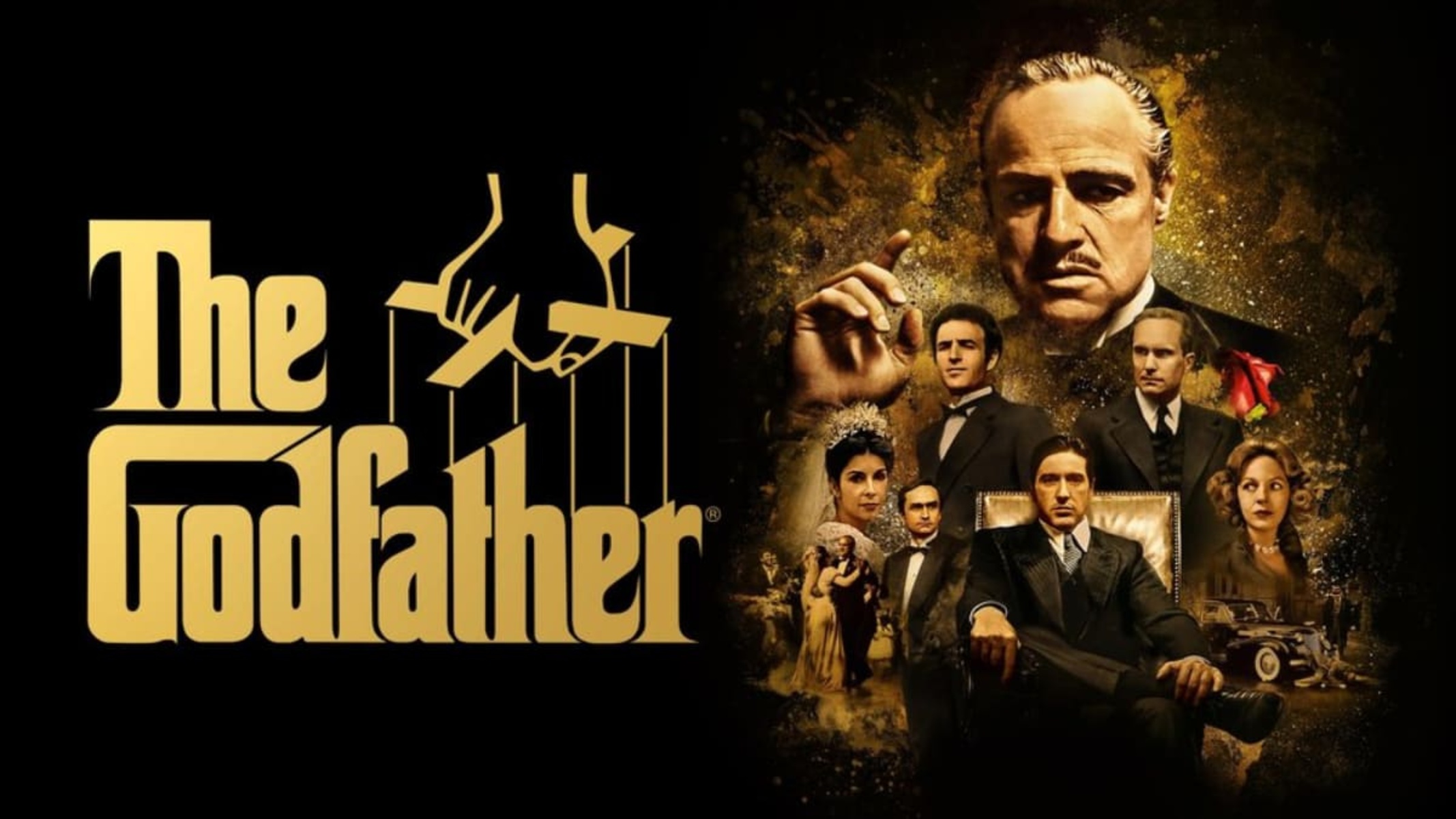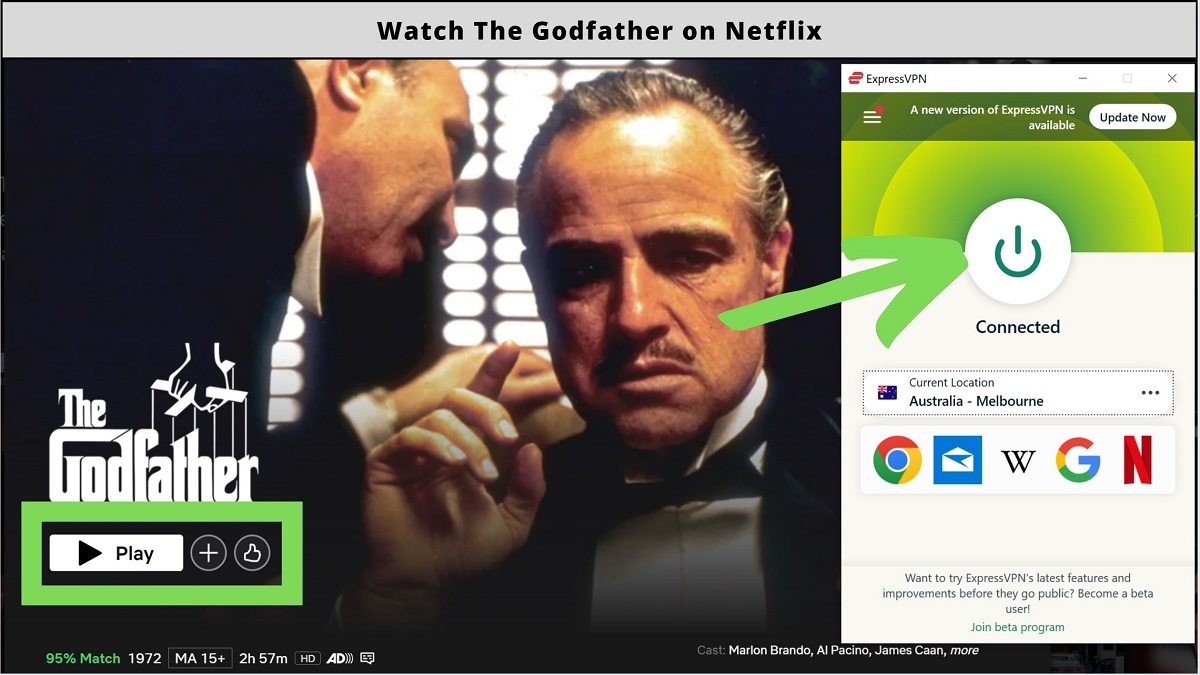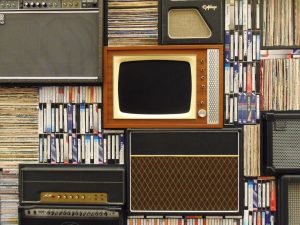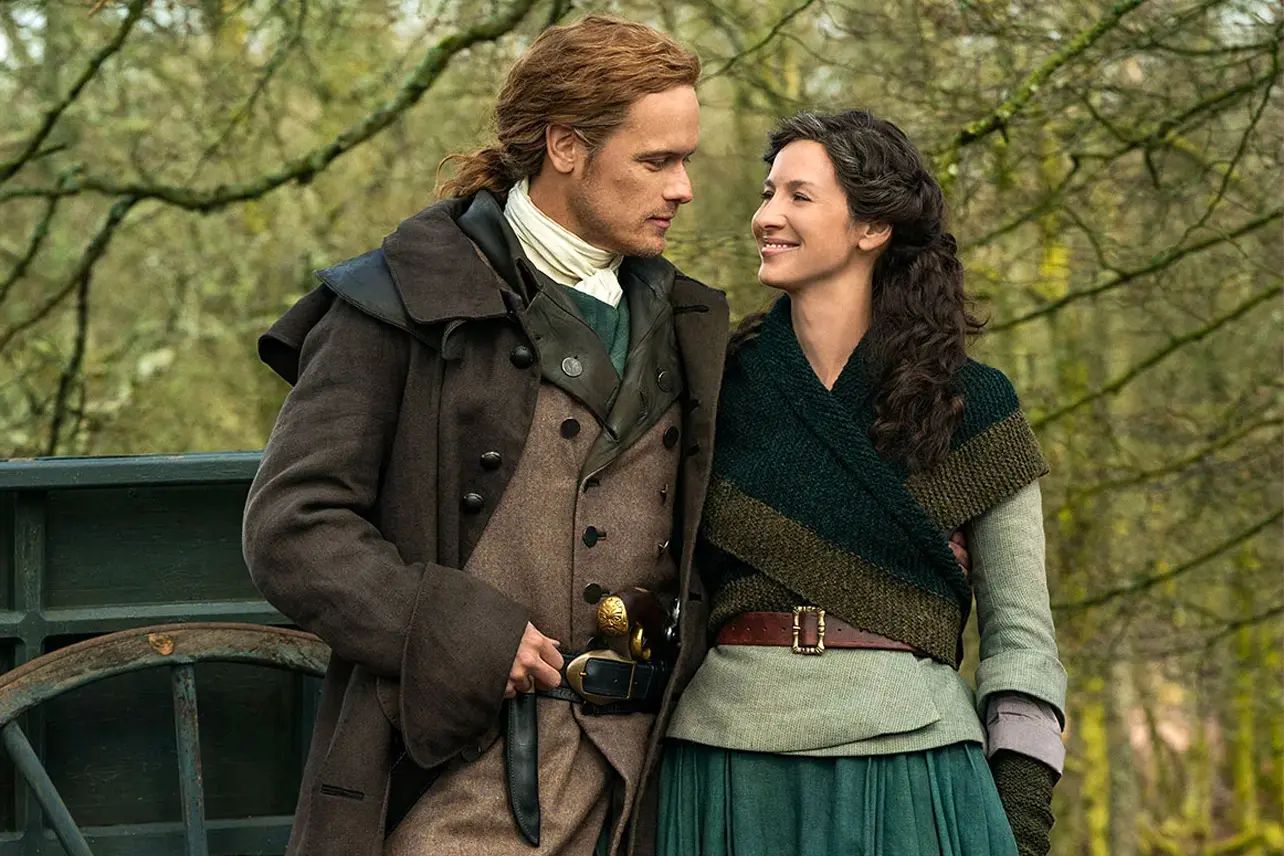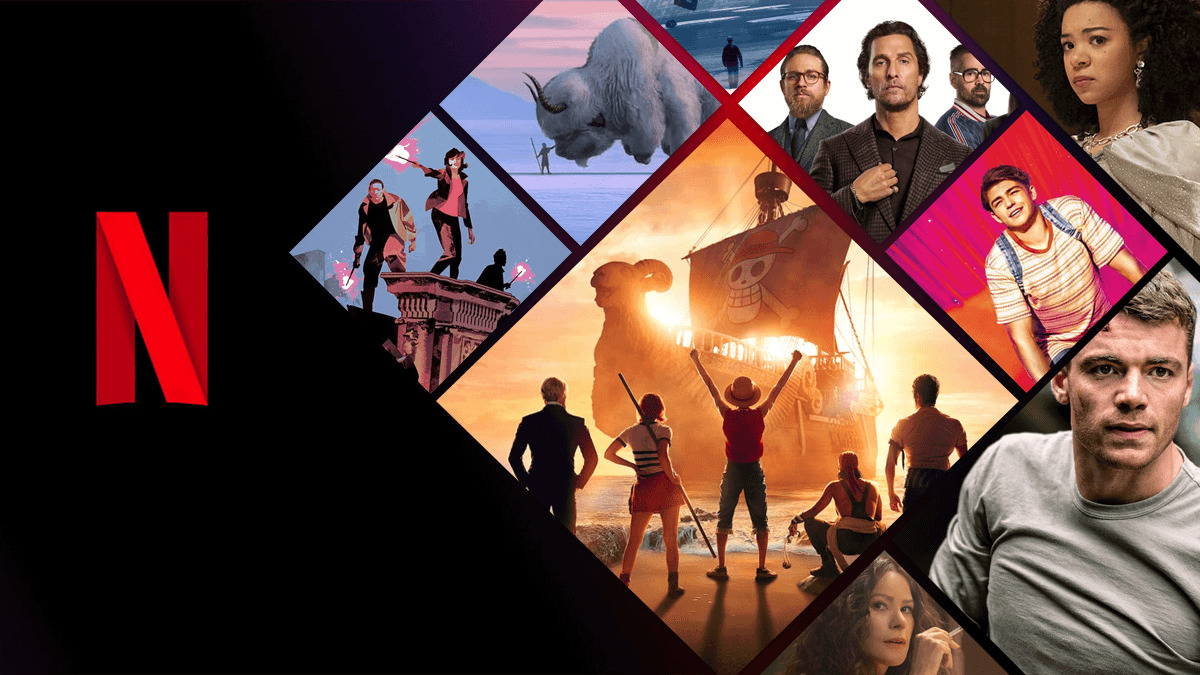Introduction
Welcome to the captivating world of “The Godfather,” a cinematic masterpiece that has left an indelible mark on film history. Directed by Francis Ford Coppola and released in 1972, this iconic crime drama has garnered widespread acclaim and a dedicated fan base over the years. Set against the backdrop of the Italian-American mafia in New York City during the mid-20th century, “The Godfather” tells the compelling story of the Corleone crime family and their struggle to maintain power and honor.
With its gripping narrative, unforgettable characters, and expert filmmaking, “The Godfather” has become a timeless classic that continues to resonate with audiences today. From its intricate plot to its richly detailed settings, this film offers a mesmerizing cinematic experience that has stood the test of time. Whether you’re a longtime fan or a first-time viewer, exploring the world of “The Godfather” is sure to be a rewarding journey into the depths of human nature, power, and loyalty.
In this article, we will delve into the various aspects that make “The Godfather” a must-watch film. We’ll explore the different versions available, provide a comprehensive summary of the plot, analyze the themes and symbolism, discuss the performances of the talented cast, dissect the cinematography and visual style, examine the soundtrack’s role, and appreciate the directorial prowess of Francis Ford Coppola.
Additionally, we will touch upon the impact and influence of “The Godfather” on the film industry and recommend the best viewing order for the trilogy. So, grab some popcorn, settle into your favorite chair, and immerse yourself in the world of “The Godfather” as we embark on this cinematic journey together.
Understanding the Legacy of The Godfather
The influence and legacy of “The Godfather” can hardly be overstated. Upon its release, the film was not only a commercial success but also received widespread critical acclaim, earning three Academy Awards, including Best Picture. It solidified Francis Ford Coppola’s reputation as a master filmmaker and served as a breakthrough for many of the cast members.
One of the key reasons for the film’s enduring legacy is its compelling storytelling. Adapted from Mario Puzo’s best-selling novel of the same name, “The Godfather” weaves a intricate tale of family, power struggles, and the consequences of choices. It explores themes of loyalty, honor, and the corrupting nature of power in a deeply engaging and thought-provoking manner.
Beyond its captivating narrative, “The Godfather” also introduced a new level of realism and authenticity to the gangster genre. Rather than simply glamorizing the mafia lifestyle, the film humanizes its characters, allowing the audience to empathize with their struggles, conflicts, and moral dilemmas. This nuanced approach elevated the film to a higher level, setting a new standard for crime dramas that followed.
Moreover, “The Godfather” boasts an ensemble cast of outstanding performances, led by Marlon Brando in his iconic portrayal of Vito Corleone. Brando’s nuanced performance, complete with his raspy voice and subtle facial expressions, brought a depth and complexity to the character that has become legendary. Al Pacino’s riveting portrayal of Michael Corleone also marked the beginning of his rise to stardom.
In terms of technical achievements, “The Godfather” demonstrated Francis Ford Coppola’s exceptional directorial skills and his careful attention to detail. The film’s cinematography, with its dark and shadowy lighting, captures the mood and atmosphere of the story perfectly. Coppola’s meticulous approach to constructing each scene, from the framing to the blocking of the actors, contributes to the film’s visual storytelling prowess.
This seminal film has left an indelible mark on popular culture, inspiring countless tributes, parodies, and references in films, television shows, and even music. It has spawned a franchise with two equally lauded sequels, and its impact can be felt in the works of subsequent filmmakers who were influenced by its style, themes, and approach to storytelling.
In essence, the legacy of “The Godfather” is rooted in its artistic excellence, its ability to resonate with audiences of different generations, and its enduring influence on the film industry. As we delve deeper into the various elements that make this film exceptional, we uncover the layers of complexity and craftsmanship that have solidified “The Godfather” as an absolute cinematic masterpiece.
Choosing the Right Version to Watch
When it comes to watching “The Godfather,” it’s essential to select the appropriate version for the most immersive and authentic viewing experience. Over the years, different versions of the film have been released, each offering slight variations in content and presentation. Here, we will explore the options available and guide you in choosing the ideal version.
The original theatrical release of “The Godfather” has a runtime of approximately 175 minutes. This version is often considered the definitive edition and the one that audiences first fell in love with. It showcases Francis Ford Coppola’s original vision and is highly recommended for those seeking the purest experience.
Alternatively, there is “The Godfather: The Coppola Restoration,” a version released in 2008. This edition features a meticulous restoration process that enhances the film’s visual and audio quality. The restoration not only improves the overall picture and sound but also revitalizes the cinematography, allowing viewers to appreciate the film’s aesthetics with impressive clarity.
For those who crave a more extensive immersion into the Corleone family saga, the complete trilogy box set is a fantastic option. This set includes all three films: “The Godfather,” “The Godfather Part II,” and “The Godfather Part III,” allowing you to experience the captivating story from beginning to end. Watching the entire trilogy provides a comprehensive understanding of the characters, relationships, and overarching narrative.
Another consideration is whether to watch the films in chronological or release order. Watching the trilogy in release order allows you to experience the story as it was originally presented to audiences. Starting with “The Godfather” and then moving on to the sequels allows for a more organic progression, as you witness the characters’ growth and the family’s evolution.
On the other hand, watching the trilogy in chronological order, starting with “The Godfather Part II,” offers a different perspective. This order allows you to witness the backstory of Vito Corleone’s rise to power and then delve into Michael Corleone’s complex journey. Although unconventional, this chronological approach can provide a deeper understanding of the characters’ motivations and actions.
Ultimately, the choice of which version to watch and the order in which to view the films depends on your personal preferences. Whether you opt for the original theatrical release, the meticulously restored edition, or the complete trilogy box set, immersing yourself in “The Godfather” universe is an unforgettable experience that will transport you into the heart of the Corleone family’s world of power, loyalty, and tragedy.
Setting the Mood: Creating the Perfect Viewing Environment
Watching “The Godfather” is not just about sitting in front of a screen; it’s about creating an immersive experience that transports you to the world of the Corleone family. To fully appreciate the masterpiece that is “The Godfather,” it’s essential to set the right mood and create a viewing environment that enhances the film’s impact and atmosphere.
First and foremost, find a comfortable spot to watch the film. Whether it’s your cozy living room couch, a plush recliner, or a home theater setup, ensure that you have a seat that allows you to relax and fully engage with the film. Settle in and prepare yourself for a cinematic journey.
Dim the lights in the room to create a more intimate ambiance. “The Godfather” is known for its use of shadows and contrast, so dimming the lights helps to recreate the dark and brooding visuals that contribute to the film’s atmosphere of intrigue and suspense.
Avoid distractions by turning off your phone or putting it on silent mode. Eliminating interruptions will allow you to fully immerse yourself in the world of the film and remain captivated by every scene and line of dialogue.
Consider enhancing the audio experience by using a surround sound system or high-quality headphones. “The Godfather” features a masterful score and memorable dialogue, and by optimizing the sound, you’ll be able to appreciate the subtleties of the soundtrack and fully grasp the weight of every word spoken.
Lastly, indulge in some Italian-inspired snacks or a meal to accompany your viewing experience. Whether it’s a piping hot slice of pizza, a bowl of pasta, or some antipasto platters, enjoying delicious Italian cuisine will help create a sensory connection to the film’s setting and themes.
By taking these steps to set the mood and create the perfect viewing environment, you’ll be able to fully immerse yourself in the world of “The Godfather” and appreciate the film on a deeper level. This attention to detail will enhance your overall enjoyment of the story, characters, and craftsmanship that make it a cinematic masterpiece.
Dive into the Plot: A Comprehensive Summary of The Godfather
“The Godfather” takes us on a compelling journey into the world of the Corleone crime family, led by the patriarch, Vito Corleone (Marlon Brando). Set in the 1940s, the film opens with Vito’s daughter’s wedding, providing an opportunity for us to meet the family members and their associates.
As the story unfolds, we witness the inner workings of the Corleone family and the power struggles that ensue. Vito’s youngest son, Michael (Al Pacino), initially wants no part in the family business, preferring a life away from the criminal underworld. However, circumstances compel Michael to step up and fill the void left by his older brothers, Sonny (James Caan) and Fredo (John Cazale), who are unable to protect the family’s interests.
Michael’s transformation into a ruthless and cunning leader forms the basis of the film’s narrative. With Vito’s guidance, Michael navigates the treacherous world of organized crime, making strategic decisions to protect the family and consolidate their power. As his actions become increasingly ruthless, Michael becomes fully enmeshed in the world he initially sought to avoid.
The plot thickens as rival mob families and ambitious individuals seek to challenge the Corleone empire. Michael’s younger brother, Fredo, unwittingly aids their enemies, jeopardizing the family and setting the stage for a series of betrayals and retribution.
Throughout the film, we are introduced to a host of memorable characters, including Tom Hagen (Robert Duvall), the family’s consigliere, and the hot-headed Sonny, who meets a tragic fate. We also witness the intricate dynamics of the Corleone women, particularly Michael’s wife, Kay (Diane Keaton), and his sister, Connie (Talia Shire), whose marriages and personal lives are deeply entangled with the family’s fortunes.
“The Godfather” intertwines personal drama with grand themes of power, loyalty, and morality. It explores the complexities of the human condition and the sacrifices individuals are willing to make to protect their loved ones. As the tension mounts, we witness the consequences of the choices made by every character, ultimately leading to a climactic and unforgettable finale.
By diving into the intricacies of the plot, “The Godfather” captivates us with its masterful storytelling, unforgettable characters, and the exploration of themes that resonate with audiences long after the film’s credits roll.
Unraveling the Themes and Symbolism
Beneath the surface of “The Godfather” lies a complex web of themes and symbolism that add depth and layers to the narrative. Let’s unravel some of these themes and explore the symbolism that enriches the film’s storytelling.
One of the prominent themes in “The Godfather” is the dichotomy between family loyalty and the corrupting influence of power. The Corleone family is driven by a deep sense of loyalty to their own, but this loyalty often clashes with the pursuit of power and the compromises it demands. The film examines how individuals navigate these two opposing forces and the personal sacrifices they make to maintain the integrity of their kin.
Another theme explored in the film is the concept of the American Dream. The Corleones are Italian immigrants who have built an empire in America, representing the pursuit of success and prosperity. However, “The Godfather” presents a twisted version of the American Dream, illustrating the price one must pay and the moral compromises required to achieve it.
The film is replete with symbolism, subtly reflecting the story’s underlying themes. One notable symbol is the use of oranges, which often appear in scenes preceding acts of violence or tragedy. Oranges represent impending doom and subtly foreshadow the unfortunate events about to unfold, serving as a reminder that even in the world of power and wealth, no one is safe from the consequences of their actions.
Additionally, the presence of religion and the role of Catholicism in the characters’ lives is a recurring motif. The religious iconography signifies the characters’ sense of guilt, sin, and the struggle between moral values and criminal actions. It highlights the complex moral universe in which they exist, blurring the line between right and wrong.
Furthermore, the motif of doors and entrances serves as symbolic thresholds, representing the transition from innocence to corruption. Characters, particularly Michael, often cross these thresholds, forever changing their lives and sealing their fates. These symbolic moments emphasize the irreversible nature of their choices and the consequences they must face.
“The Godfather” utilizes these themes and symbols to explore the intricacies of human nature, power dynamics, and the shades of morality. It challenges viewers to examine their own values, pondering the lengths they would go to protect their own families and confronting the moral ambiguities that arise in the face of power and loyalty.
By unraveling the film’s themes and symbolism, we gain a deeper appreciation of the narrative’s complexity, the characters’ motivations, and the profound questions it poses about the human condition.
Appreciating the Acting: A Look at the Key Performances
“The Godfather” boasts a cast of incredibly talented actors who deliver captivating performances, breathing life into the characters and making them memorable for generations to come. Let’s take a closer look at some of the key performances that have contributed to the film’s lasting impact.
At the forefront is Marlon Brando’s portrayal of Vito Corleone, which earned him an Academy Award for Best Actor. Brando brings a commanding presence to the role, imbuing Vito with a mix of power, wisdom, and vulnerability. His nuanced performance, accentuated by his iconic raspy voice and subtle mannerisms, showcases the depth of his talent, making Vito an unforgettable character.
Equally mesmerizing is Al Pacino as Michael Corleone, a role that propelled him to stardom. Pacino’s transformation from a reluctant outsider to a ruthless leader is a masterclass in acting. Through his restrained yet intense portrayal, he captures Michael’s internal struggle, making every decision and action feel weighty and consequential.
James Caan delivers a dynamic and passionate performance as Sonny Corleone, the hot-tempered and impulsive eldest son of the family. Caan’s portrayal brings a raw energy to the character, depicting Sonny’s volatile nature, which ultimately leads to his tragic demise. His charismatic presence and authentic portrayal make Sonny a force to be reckoned with.
Robert Duvall shines as Tom Hagen, the Corleone family’s trusted advisor and consigliere. Duvall’s quiet strength and calm demeanor bring a sense of grounding to the film. His subtle yet impactful performance showcases Tom’s loyalty and intelligence, making him a compelling character who operates behind the scenes.
Furthermore, Diane Keaton delivers a remarkable performance as Kay Adams, Michael’s love interest and eventual wife. Keaton’s portrayal exemplifies Kay’s transformation from an innocent outsider to a conflicted insider, grappling with the consequences of being a part of the Corleone family. Her emotional depth and chemistry with Pacino add another layer of complexity to the story.
These are just a few examples of the exceptional acting in “The Godfather.” From the main cast to the supporting players, each actor brings their A-game, creating a cohesive ensemble that elevates the film to a whole new level. Their performances capture the essence of each character, allowing us to empathize, despise, and go on an emotional journey with them as they navigate the complex world of organized crime.
The talent on display in “The Godfather” extends beyond the central characters, with every actor delivering solid performances that contribute to the film’s realism and authenticity. Through their commitment and skill, they breathe life into the story, making it resonate with audiences and securing their places in cinematic history.
Dissecting the Cinematography and Visual Style
The cinematography and visual style of “The Godfather” play a vital role in enhancing the storytelling and creating a distinct atmosphere. Francis Ford Coppola, along with cinematographer Gordon Willis, crafted a visually stunning film that remains a benchmark for cinematic excellence.
Coppola and Willis made deliberate choices in framing and lighting to evoke the dark and morally complex world of the Corleone family. The film’s visual style is characterized by the use of shadows and low lighting, creating an atmosphere of tension, secrecy, and foreboding. The skillful manipulation of light and darkness not only adds a noir-like quality to the visuals but also underscores the moral ambiguity of the characters and their actions.
The film’s cinematography employs a variety of techniques to immerse viewers in the Corleones’ world. One notable technique is the use of long takes and steady camerawork, which establishes a sense of realism and allows the audience to observe the characters and their interactions without interruption. This restrained approach allows the performances and the power dynamics within the scenes to take center stage.
Another noteworthy aspect of the cinematography is the careful attention to detail in each shot. From capturing the grandeur of lavish wedding scenes to highlighting the small nuances in a character’s expression, the visuals in “The Godfather” are meticulously composed to enhance the emotional impact and increase our understanding of the characters’ inner workings.
The film’s visual style further extends to its iconic use of settings and locations. The Corleone family home, with its grandeur and opulence, serves as a symbol of power and authority, while the dark alleyways and backrooms reflect the seedy underbelly of the mafia’s operations. These contrasting environments contribute to the film’s overall visual storytelling, delineating the differences between the private and public lives of the characters.
Aesthetic choices such as costume design and production design also play a role in shaping the film’s visual style. The elegant period costumes, spanning from the 1940s to the 1950s, enhance the authenticity of the era and contribute to the film’s realism. The attention to detail in the production design, from the elaborate interiors of the Corleone mansion to the authenticity of the streets of New York, further immerses viewers in the world of the story.
In essence, the cinematography and visual style of “The Godfather” are integral to its storytelling, effectively conveying the atmosphere, themes, and emotions of the narrative. Through the skillful use of lighting, composition, and attention to detail, Francis Ford Coppola and Gordon Willis created a visually compelling film that continues to captivate audiences and inspire generations of filmmakers.
Analyzing the Soundtrack: The Role of Music in The Godfather
The soundtrack of “The Godfather” is as iconic as the film itself, playing a crucial role in enhancing the storytelling, evoking emotions, and immersing viewers in the world of the Corleone family. Composed by the legendary Nino Rota, the music of “The Godfather” has become synonymous with timeless cinematic excellence.
The film’s score is characterized by its haunting and evocative melodies, which beautifully capture the mood and atmosphere of each scene. From the haunting trumpet solo of the main theme to the lush strings that underscore moments of tension and conflict, the music effortlessly heightens the emotional impact of the story.
One of the film’s most recognizable pieces is the “Love Theme,” a poignant melody that reflects the forbidden love between Michael Corleone and his wife, Kay. Played on solo trumpet and accompanied by soft strings, the theme encapsulates the bittersweet nature of their relationship and serves as a reminder of the price they pay for being part of the Corleone family.
Another notable aspect of the soundtrack is the incorporation of traditional Italian music. Songs like “Speak Softly Love” (also known as “The Godfather Theme”) and “Santa Lucia” add a sense of cultural authenticity, honoring the Corleones’ Italian heritage and providing a contrast to the darker and more dramatic moments in the narrative.
The strategic use of music in key scenes further enhances the impact of the storytelling. For instance, the famous baptism scene, in which Michael Corleone carries out a series of violent acts while his nephew is being baptized, is underscored by a haunting organ piece. This juxtaposition of sacred music and violent actions creates a chilling contrast, highlighting the moral complexity of the character and the corrupting influence of power.
Furthermore, the absence of music in certain scenes is also employed to great effect. Silence is used to heighten suspense, drawing the audience’s attention to the dialogue and actions taking place. These moments of silence make the bursts of music even more impactful, creating a dynamic contrast that adds depth and tension to the film.
The music of “The Godfather” has left an indelible mark on popular culture, with its themes and melodies instantly recognizable to audiences worldwide. It has been celebrated as one of the greatest film soundtracks of all time, credited for its ability to seamlessly complement and enhance the narrative, evoke emotions, and create a lasting impact on viewers.
From the captivating main theme to the strategically placed pieces that elevate key scenes, the soundtrack of “The Godfather” is a masterful composition that adds another layer of brilliance to the film’s artistic achievements.
Examining the Director’s Craft: Francis Ford Coppola’s Influence
Francis Ford Coppola’s directorial prowess in “The Godfather” has left an indelible mark on the world of filmmaking, contributing to the film’s enduring legacy. Let’s take a closer look at Coppola’s craft and the influence he brought to the production.
Coppola’s meticulous attention to detail shines through in every aspect of the film. From the impeccably crafted shots to the carefully constructed performances, his commitment to excellence is evident. He is renowned for his ability to create complex and multi-dimensional characters, allowing the audience to form meaningful and emotional connections with them.
One of the key strengths of Coppola’s direction is his ability to balance the grand themes of the story with intimate character moments. He seamlessly weaves together the personal struggles of the Corleone family with the epic scope of their criminal empire, creating a rich and multi-layered narrative that resonates with audiences.
Coppola’s exceptional skill in managing large ensemble casts is evident in “The Godfather.” He elicits standout performances from each actor, carefully honing their characters to fit seamlessly into the tapestry of the story. His guidance and direction allowed the actors to fully embody their roles, resulting in nuanced and compelling portrayals.
The visual style of “The Godfather” reflects Coppola’s unique cinematic vision. Working closely with cinematographer Gordon Willis, he employed specific lighting techniques and framing choices that emphasized the darkness and moral complexity of the story. The meticulous attention to detail in the production design and costume choices further enhances the authenticity and believability of the film’s setting.
Coppola’s use of pacing and editing is also notable in “The Godfather.” He masterfully builds tension and suspense throughout the film, allowing the story to unfold at a pace that captivates the audience. The well-paced editing creates a rhythmic flow that draws viewers into the world of the film and keeps them engaged from start to finish.
Beyond his technical skills, Coppola’s directorial influence extends to his ability to bring thematic depth and social commentary to his work. “The Godfather” explores themes of power, loyalty, and the corrupting nature of success, shedding light on the human condition and societal dynamics. Coppola’s direction elevates these themes, prompting thought and discussion among viewers.
Furthermore, Coppola’s commitment to his vision has had a lasting impact on filmmaking. “The Godfather” demonstrated the power of storytelling and the art of character-driven narratives, inspiring generations of filmmakers to delve into the depths of human nature and explore complex themes within their work.
Overall, Francis Ford Coppola’s directorial craft in “The Godfather” showcased his exceptional talent, attention to detail, and ability to create transcendent storytelling experiences. His influence can be seen not only in the world of cinema but also in the way we appreciate and understand the power of filmmaking as a form of artistic expression.
Discussing the Impact and Influence of The Godfather
“The Godfather” has left an undeniable impact on both the film industry and popular culture, solidifying its position as a cinematic masterpiece. Its influence can be seen in various aspects, from filmmaking techniques to the portrayal of organized crime and the enduring popularity of the mafia genre.
One of the film’s significant contributions is its portrayal of the mafia and organized crime. “The Godfather” presented a more nuanced and humanizing depiction of the mafia, moving away from the typical stereotypes and showcasing the complex characters and intricate relationships within these organizations. It set a benchmark for future crime dramas, laying the foundation for a new wave of storytelling that delved into the human side of the criminal world.
The film’s impact also extends to its technical achievements. From the refined cinematography to the meticulous attention to detail, “The Godfather” set a standard for visual storytelling and craftsmanship. Filmmakers were inspired by Francis Ford Coppola’s choices in lighting, framing, and composition, and his approach to creating an immersive world for the audience.
Furthermore, the film’s success at the box office, along with critical acclaim, opened doors for more ambitious and character-driven projects. Studios began to recognize the value in supporting films that focused on complex narratives and provided filmmakers with the creative freedom to explore themes and delve into deep character studies.
The impact of “The Godfather” can also be seen in its lasting influence on popular culture. The film introduced iconic lines, memorable scenes, and unforgettable characters that have become deeply ingrained in the collective consciousness. Elements of the film have been parodied, referenced, and celebrated in popular media, cementing its place as a cultural touchstone.
Additionally, “The Godfather” paved the way for a trilogy format, showcasing the potential of telling a complete and immersive story across multiple films. Its success inspired filmmakers to explore expansive narratives and create epic sagas that allow for deeper exploration of characters and themes.
Moreover, the impact of “The Godfather” extends beyond the realm of cinema. It has sparked academic analysis, cultural discussions, and debates about morality, power, and the nature of family. The film continues to prompt conversations about the choices we make, the consequences of our actions, and the complexities of human nature.
In sum, “The Godfather” has had a profound impact on the film industry, popular culture, and the broader societal discourse. Its influence can be felt in the way stories are told, the portrayal of organized crime, and the rich tapestry of characters and themes explored in films. As a timeless classic, “The Godfather” continues to inspire and captivate audiences, reaffirming its place as one of the greatest films ever made.
Recommended Viewing Order for the Trilogy
For those embarking on a journey into the world of “The Godfather” trilogy, the question of viewing order often arises. While there are differing opinions on the matter, a recommended viewing order can enhance the overall narrative and provide a more comprehensive understanding of the Corleone family saga.
One common recommended viewing order is to start with “The Godfather” (1972), followed by “The Godfather Part II” (1974), and concluding with “The Godfather Part III” (1990). This chronological order allows viewers to witness the rise of Vito Corleone, played by Robert De Niro in “The Godfather Part II,” and the subsequent story of his son Michael, portrayed by Al Pacino in all three films.
Beginning with “The Godfather” sets the foundation of the story, introducing audiences to the characters, their motivations, and the profound power dynamics within the Corleone family. The film establishes the themes and alliances that will become central throughout the rest of the trilogy.
Following up with “The Godfather Part II” opens a window into the past, delving into the early life of Vito Corleone and his ascent to power. This prequel/sequel combination provides crucial context and a deeper understanding of Vito’s character, while also exploring the consequences of Michael’s choices and the potential pitfalls of family and power.
“The Godfather Part III,” the final installment of the trilogy, concludes the epic story of the Corleone family. It explores the challenges faced by Michael as he seeks to legitimize the family business and find redemption amidst his past sins. Although not as universally acclaimed as the first two films, “The Godfather Part III” provides closure to the story, offering insights into the price of power and the complexities of familial ties.
While some argue for a chronological viewing order, beginning with “The Godfather Part II” and then moving to the original “The Godfather,” the recommended order mentioned above allows for a more organic and cohesive narrative experience. It allows viewers to witness the story’s progression as it was intended by the filmmakers and offers a deeper appreciation of the characters’ arcs and the impact of their choices.
Ultimately, the choice of viewing order depends on personal preference. However, following the recommended order of “The Godfather,” “The Godfather Part II,” and “The Godfather Part III” offers a comprehensive and engaging viewing experience that delves into the intricate world of the Corleone family and their enduring legacy.
Final Thoughts and Takeaways
“The Godfather” stands as a timeless masterpiece that continues to captivate audiences with its compelling storytelling, exceptional performances, and meticulous craftsmanship. This cinematic gem has left an indelible mark on the film industry and popular culture, influencing subsequent works in the gangster genre and setting a benchmark for cinematic excellence.
From its gripping plot to its richly developed characters, “The Godfather” explores universal themes of family, power, loyalty, and the moral complexities of human nature. It challenges viewers to reflect on the choices we make, the consequences they entail, and the immutable bond of family ties.
The film’s impact extends beyond its artistic achievements. It inspired filmmakers to push boundaries, embrace character-driven narratives, and delve into the intricacies of human psychology. Through its exceptional direction, lush visuals, and haunting score, “The Godfather” exemplifies the power of cinema as a medium of storytelling and artistic expression.
Viewers are drawn in by the outstanding performances of the ensemble cast, particularly Marlon Brando and Al Pacino, who bring their respective characters to life with depth and nuance. Each actor contributes to the palpable realism and emotional depth of the film, making it an unforgettable cinematic experience.
Furthermore, the legacy of “The Godfather” lies in its enduring influence on popular culture, evident in the countless references, parodies, and tributes found in films, television shows, and music. Its impact reaches far beyond the screen and remains a part of our cultural consciousness today.
Revisiting “The Godfather” or experiencing it for the first time allows us to appreciate its timeless brilliance and the mastery of its creators. The film serves as a reminder of the power of storytelling to illuminate the human condition, challenge our perceptions, and leave a lasting impression.
As we dive into the world of “The Godfather,” we are transported to a complex and morally ambiguous universe, where power and loyalty collide, and the consequences of choices resonate long after the credits roll. It is a testament to the lasting impact of this cinematic triumph that it continues to captivate and inspire audiences, ensuring its place in film history for generations to come.







